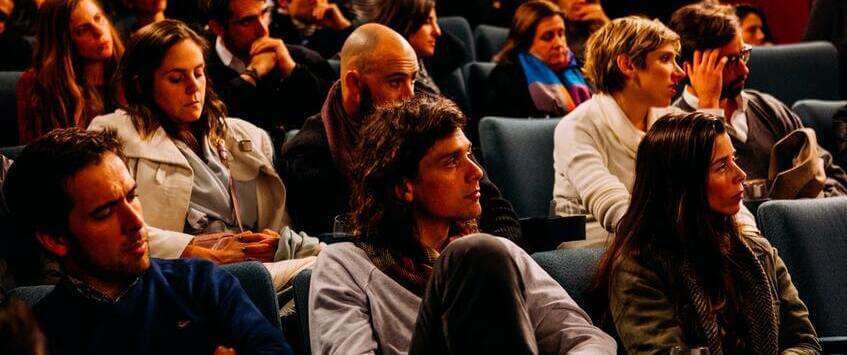Study & courses 文章數: 0

Lorem ipsum dolor sit amet, consectetur adipiscing elit. Nunc consequat leo at tellus aliquam luctus. Vestibulum fringilla quam non lectus viverra consequat. Quisque elementum turpis in leo cursus, vitae vestibulum nibh fringilla. Sed placerat, magna non tempus semper, ante massa fringilla ipsum, sollicitudin ultricies lacus massa sit amet augue.
Extensions 文章數: 0
Components 文章數: 0
Components are larger extensions that produce the major content for your site. Each component has one or more "views" that control how content is displayed. In the Joomla administrator there are additional extensions such as Menus, Redirection, and the extension managers.
Modules 文章數: 0
Modules are small blocks of content that can be displayed in positions on a web page. The menus on this site are displayed in modules. The core of Joomla! includes 24 separate modules ranging from login to search to random images. Each module has a name that starts mod_ but when it displays it has a title. In the descriptions in this section, the titles are the same as the names.
Content Modules 文章數: 0
Content modules display article and other information from the content component.
User Modules 文章數: 0
User modules interact with the user system, allowing users to login, show who is logged-in, and showing the most recently registered users.
Display Modules 文章數: 0
These modules display information from components other than content and user. These include weblinks, news feeds and the media manager.
Utility Modules 文章數: 0
Utility modules provide useful functionality such as search, syndication and statistics.
Navigation Modules 文章數: 0
Navigation modules help your visitors move through your site and find what they need.
Menus provide your site with structure and help your visitors navigate your site. Although they are all based on the same menu module, the variety of ways menus are used in the sample data show how flexible this module is.
A menu can range from extremely simple (for example the top menu or the menu for the Australian Parks sample site) to extremely complex (for example the About Joomla! menu with its many levels). They can also be used for other types of presentation such as the site map linked from the "This Site" menu.
Breadcrumbs provide users with information about where they are in a site.
Templates 文章數: 0
Templates give your site its look and feel. They determine layout, colours, typefaces, graphics and other aspects of design that make your site unique. Your installation of Joomla comes prepackaged with three front end templates and two backend templates. Help
Beez3 文章數: 0
Beez3 is a versatile, easy to customise template that works for a variety of sites. It meets major accessibility standards and demonstrates a range of css and javascript techniques.
Protostar 文章數: 0
Protostar is a mobile ready template designed using Twitter Bootstrap. It is sleek and easily to customise. It is the default template for Joomla 3.
Languages 文章數: 0
Joomla! installs in English, but translations of the interfaces, sample data and help screens are available in dozens of languages. Help
If there is no language pack available for your language, instructions are available for creating your own translation, which you can also contribute to the community by starting a translation team to create an accredited translation.
Translations of the interfaces are installed using the extensions manager in the site administrator and then managed using the language manager.
If you have two or more languages installed you may enable the language switcher plugin and module. They should always be used together. If you create multilingual content and mark your content, menu items or modules as being in specific languages and follow the complete instructions your users will be able to select a specific content language using the module. By default both the plugin and module are disabled.
Joomla 2.5 installs with a language override manager that allows you to change the specific words (such as Edit or Search) used in the Joomla application.
There are a number of extensions that can help you manage translations of content available in the Joomla! Extensions Directory.
Life at Campus 文章數: 0

Lorem ipsum dolor sit amet, consectetur adipiscing elit. Nunc consequat leo at tellus aliquam luctus. Vestibulum fringilla quam non lectus viverra consequat. Quisque elementum turpis in leo cursus, vitae vestibulum nibh fringilla. Sed placerat, magna non tempus semper, ante massa fringilla ipsum, sollicitudin ultricies lacus massa sit amet augue.
Park Blog 文章數: 0

Here is where I will blog all about the parks of Australia.
You can make a blog on your website by creating a category to write your blog posts in (this one is called Park Blog). Each blog post will be an article in that category. If you make a category blog menu link with 1 column it will look like this page, if you display the category description then this part is displayed.
To enhance your blog you may want to add extensions for comments, interacting with social network sites, tagging, and keeping in contact with your readers. You can also enable the syndication that is included in Joomla (in the Integration Options set Show Feed Link to Show and make sure to display the syndication module on the page).
Photo Gallery 文章數: 0
These are my photos from parks I have visited (I didn't take them, they are all from Wikimedia Commons).
This shows you how to make a simple image gallery using articles in com_content.
In each article put a thumbnail image before a "readmore" and the full size image after it. Set the article to Show Intro Text: Hide.
Working opportunities at JSN Campus 文章數: 0

Lorem ipsum dolor sit amet, consectetur adipiscing elit. Nunc consequat leo at tellus aliquam luctus. Vestibulum fringilla quam non lectus viverra consequat. Quisque elementum turpis in leo cursus, vitae vestibulum nibh fringilla. Sed placerat, magna non tempus semper, ante massa fringilla ipsum, sollicitudin ultricies lacus massa sit amet augue.
Growers 文章數: 0

We search the whole countryside for the best fruit growers.
You can let each supplier have a page that he or she can edit. To see this in action you will need to create a user who is in the suppliers group.
Create one page in the growers category for that user and make that supplier the author of the page. That user will be able to edit his or her page.
This illustrates the use of the Edit Own permission.
Sub Growers 文章數: 0

You can let each supplier have a page that he or she can edit. To see this in action you will need to create a user who is in the suppliers group.
Sub Growers 文章數: 0

You can let each supplier have a page that he or she can edit. To see this in action you will need to create a user who is in the suppliers group.
Sub Sub Growers 文章數: 0

You can let each supplier have a page that he or she can edit. To see this in action you will need to create a user who is in the suppliers group.
Sub Growers 文章數: 0

You can let each supplier have a page that he or she can edit. To see this in action you will need to create a user who is in the suppliers group.
Recipes 文章數: 0
Customers and suppliers can post their favorite recipes for fruit here.
A good idea is to promote the use of metadata keywords to make finding other recipes for the same fruit easier.
To see this in action, create a user assigned to the customer group and a user assigned to the suppliers group. These users will be able to create their own recipe pages and edit those pages. They will not be able to edit other users' pages.
Choose JSN Campus 文章數: 3
News 文章數: 15

